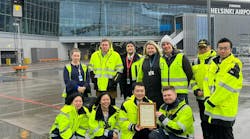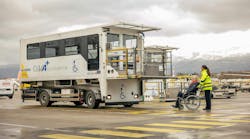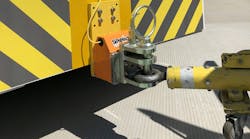We have all seen the road advertisements that highlight fatigue. But if this is a risk on the roads, why would it not be a risk at work?
Well, let me tell you it is a very real risk at work. However, in all but a few specific industries, it gets little recognition and managers and supervisors are rarely trained to be able to recognize it or manage it. They need to be.
Let’s start by identifying what causes fatigue. Fatigue is simply not enough sleep! Nothing more.
This is generally referred to as "sleep debt." Just like a bank overdraft or a mortgage where the only way to reverse the debt is to pay in funds, fatigue, then needs to clear a sleep debt, with sleep. Some road safety advertisements talk about a power nap. This is a brief sleep of, say, 15 minutes which lowers fatigue enough to help a driver stay alive to get to a safe location nearby where they can sleep. It is not designed to allow someone to drive for another four hours or more. It does not compensate for a good night’s sleep.
Fatigue is more than just feeling tired and drowsy. It is exhaustion – either mental or physical – that impacts adversely on a person’s ability to work safely. While they may not appreciate or see that they are fatigued, generally, someone in the workplace has noticed a change. This can be as simple as someone making a mistake that they would not normally make in a routine that they have carried out many times. Or not paying attention. Or "zoning out." Or simply falling asleep.
Fatigue is a health and safety risk in the workplace. Both the worker and the employer have a responsibility to manage fatigue in workers within their duty of care.
The employer must, as far as is reasonably practical, ensure that workers are not exposed to health and safety risks. This is a very encompassing concept, which is why organizations have safety management systems in place that deal with fitness to work among other elements.
The employer must provide a safe workplace, must maintain a workplace free of health and safety risks and must monitor the health of the workers and the conditions of the workplace. Now here is the difficulty –“the duty of care that employer and their representatives have is not removed by a worker’s preference for a certain shift pattern for social reasons, their willingness to work extra hours or come to work fatigued. The employer and their representatives must adopt a risk management strategy to manage risk in these circumstances,” according to Worksafe Victoria (Australia). Just as they do with all other risks in the business.
The worker (and yes, we are all workers!) must take reasonable care of his or her own health and safety and must not adversely affect the health and safety of others. They must adhere to reasonable instructions from their employer and co-operate with any fatigue management processes and procedures the organization has. Every worker has a duty to inform their supervisor if they are feeling fatigued so their supervisor can assess the tasks and/or hours allocated and review how to manage the worker within the fatigue risk management processes they have. Just as they do with all other risks that they may be exposed to.
Shift work is difficult to manage while trying to integrate with the social lives we all crave, generally with non-shift workers. This is a challenge for shift workers but one they need to take this into account and ensure that they can get enough good quality sleep.
The company directors and senior managers also have to exercise due diligence to ensure the workplace is free from health and safety risks and that such risks are understood and managed appropriately. For fatigue, this generally means ensuring that there are good processes and training in place to identify fatigue, monitor it and manage individuals and situations accordingly. Just as they have to do with all other risks in the business.
'DUTY OF CARE'
Not surprisingly, we all have a "duty of care" to ensure – to the best of our ability – that people work safely at work and also get to and from work safely. It is not enough to care for people at work and allow them to get in a car and attempt to drive home if they appear to be unfit to do so.
So, by now, you should be realizing that this is just another individual and business risk, but one that probably has not had a lot of focus in many industries to be properly managed. The good news is that this problem is actually not that hard to manage.
In the aviation industry, fatigue risk management is very evident with flight crews but not so evident in ground crews. I now do incident investigations and consider fatigue as a possible factor, just as I do with competence, maintenance, design, behaviors, etc. Understanding fatigue and how to manage and monitor it is part of the proactive controls that can be implemented to achieve improved safety performance.
How should we manage fatigue? Well there are really two steps here – how to manage proactively to try to avoid workers from suffering fatigue in the first place, and how to manage reactively when workers are showing signs of fatigue.
The first role is somewhat easier than the second.
MANAGING PROACTIVELY
Managing fatigue proactively is about setting up the workplace appropriately including the following:
- Resourcing it properly (for normal operations and conditions).
- Arranging the work properly (setting up shift lengths and patterns so that people have reasonable sleep opportunities).
- Educating workers in fatigue, the responsibilities and about getting enough sleep, showing the impacts of not getting enough sleep without being disturbed and reporting to their supervisor when this is not the situation.
- Having a safety management system that includes fatigue risk management as part of the overall fitness to work process.
- Consult and, where necessary, guide discussions on shift roster patterns to prevent ‘short turnarounds’ so that days off can be maximized because this may create a roster than results in greater fatigue.
MANAGING REACTIVELY
Managing fatigue reactively (i.e. when a worker comes to the supervisor informing him/her that they feel fatigued) is about having procedures or protocols in place to accomplish the following:
- Encourage workers to report potential fatigue (i.e.” I did not have a good night last night. I was up with my ill daughter for a lot of the night.”)
- Assess the potential for fatigue in workers (by noting changes from normal) and performing a more formal quantitative assessment when required.
- Manage the extra hours or call-ins and the allocation of this amongst individuals noting that there are generally some individuals who may want to work a larger number of extra hours to another person.
- Use a fatigue management process to assess the level of potential fatigue and implement suitable management strategies – depending on the level of fatigue, this may be as simple as having a cup of coffee; allocate a buddy or make others in the work team aware so they can help; reallocate safety critical activities to others in the group; or in extreme cases, stand the person down so they do not harm themselves or others and ensure they have a safe way of getting home to sleep.
- Have systems in place to deal with people who seem not to be able to manage their personal life so that it impacts on their work hours because they may also be impacting on the safety of their work colleagues’.
About the Author: Ian Bell, director of Global Safety Partners, has a long history in the aviation industry first with Trans Australian Airlines and Australian Airlines (the forerunners to Qantas). He spent 11 years in airlines' operational roles before joining the Shell Company of Australia where he spent 23 years in a range of senior management roles including having primary operational responsibility for the Shell Aviation operations throughout Australia and Papua New Guinea. Ian has also been involved with the Australian Aviation Ground Safety Council, which is intently focused on improving ground safety performance in airports across the Australasian region. He can be contacted at [email protected]





